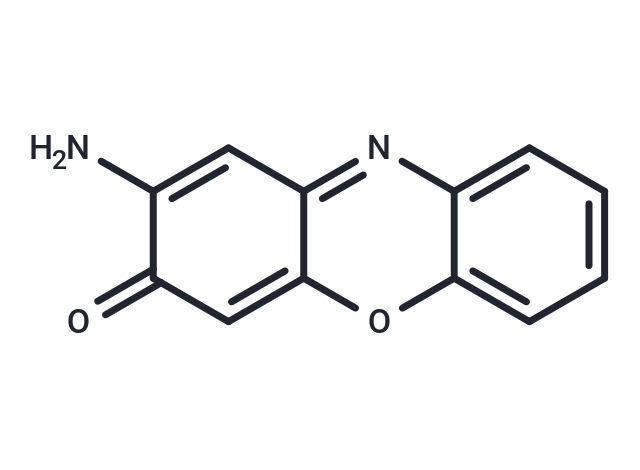Shopping Cart
- Remove All
 Your shopping cart is currently empty
Your shopping cart is currently empty

Questiomycin A is an antibiotic produced in crème fraiche with antibacterial and anticancer activities. Questiomycin A suppresses expression of GRP78, a cell-protective ER chaperone protein.

| Pack Size | Price | Availability | Quantity |
|---|---|---|---|
| 10 mg | $50 | In Stock | |
| 25 mg | $89 | In Stock | |
| 50 mg | $129 | In Stock | |
| 100 mg | $185 | In Stock | |
| 200 mg | $264 | In Stock |
| Description | Questiomycin A is an antibiotic produced in crème fraiche with antibacterial and anticancer activities. Questiomycin A suppresses expression of GRP78, a cell-protective ER chaperone protein. |
| In vitro | Questiomycin A reduces the increased intracellular pH in a variety of cancer cell lines, as well as in HUVECs and HELs[2]. Questiomycin A is cytotoxic to a variety of cancer cells, including MCF-7, A549, MIA PaCa-2, and LoVo-1 cells (IC50s = 1.67, 5.48, 7.16, and 20.03 μM, respectively) as well as human umbilical vein endothelial cells (HUVECs) but not human embryonic lung fibroblast cells (HELs; IC50s = 16.06 and >50 μM, respectively)[5]. |
| In vivo | The anti-metastatic effects of Questiomycin A were investigated in C56BL/6 mice. When B16 melanoma cells were injected into the tail veins of mice, significant metastasis of the cells was indicated in the lungs, 14 days after treatment. In contrast, when 0.5 mg/kg Questiomycin A was administered to mice through the tail veins, once simultaneously with or every three days after the administration of B16 melanoma cells, the number of metastasized pulmonary cells was extremely reduced. Moderate reduction of the number of metastasized pulmonary cells was indicated in the mice with a single dose of Questiomycin A on day 3 after injection of the cells. However, when Questiomycin A was administered in a single dose, 6 or 9 days after the injection of the cells, the number of metastasized pulmonary cells remained the same. The metastasis of mouse B16 melanoma cells to the lung was significantly inhibited in mice administered Questiomycin A, which activated the intrinsic and extrinsic apoptotic pathways[3]. |
| Molecular Weight | 212.2 |
| Formula | C12H8N2O2 |
| Cas No. | 1916-59-2 |
| Smiles | Nc1cc2nc3ccccc3oc2cc1=O |
| Relative Density. | 1.45g/cm3 |
| Storage | Powder: -20°C for 3 years | In solvent: -80°C for 1 year | Shipping with blue ice. |
| Solubility Information | DMSO: 3 mg/mL (14.14 mM), Sonication is recommended. DMF: 2 mg/mL (9.43 mM), Sonication is recommended. DMSO:PBS (pH 7.2) (1:20): 0.04 mg/mL (0.19 mM), Sonication is recommended. |

Copyright © 2015-2025 TargetMol Chemicals Inc. All Rights Reserved.